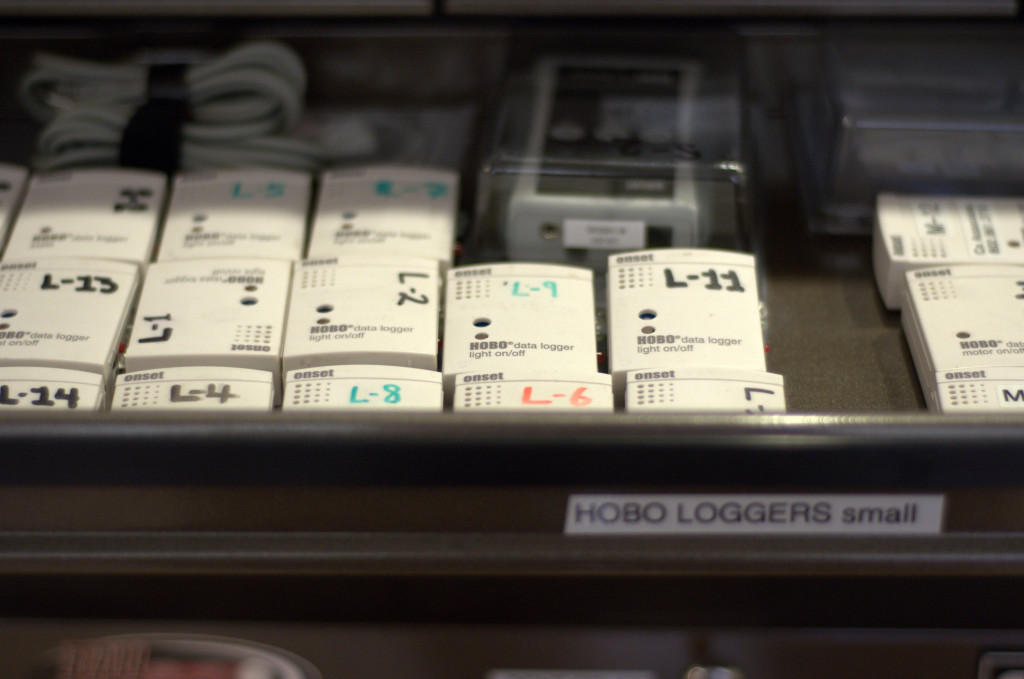Introduction
In my last post I cited three examples of incomplete or incorrect control programming that all would have had negative effects on building operations or equipment life expectancy. In this post, I want to focus on one piece of equipment, a rooftop ERU (energy recovery unit) and, more specifically, on the graphic page for that ERU. This is another prime example of the controls not being done even though the contractor had said they were complete.
The “Finished” Graphics
Below is what the building operator saw when they logged on to their brand-spanking new BMS system. I’ve added the red numbers to highlight some of the issues we found.
- There is no indication of wheel bypass damper positions.
- There is no indication of the exhaust damper position.
- There is no indication of the heat recovery wheel, command, status or speed (this wheel is driven by a VFD)
- The supply fan command is on but the speed says 0.0% and the supply fan amps read 8.7A.
- The fan speed might represent the command, not feedback, in which case the controls may be sending a 0% speed command which then causes the VFD to run at its internal, minimum speed. This would cause the amps to show up at some value other than 0.0 (because the fan might actually be running).
- Note that this indicates a real operational issue, namely that the return air flow is over 12,000 CFM, but the supply fan is barely running.
- What does it mean when the reversing valve is off? It should either read “heat” or “cool”.
- The Low Temp reading is “????”.
- This is a low limit or freeze stat. Maybe this is a bit picky, but it should say “low limit” or “freeze stat”.
- The leaving conditions off the wheel should be in degrees F and % RH.
- The Iso (isolation) Damper is shown as “On”. Dampers are either open or closed or X% open, not “On” or “Off”.
- What does the “Iso Pressure” represent? Is this the pressure across the damper?
- The condenser water valve is 100% ... open or closed?
- There are no units associated with the Zone Temp & RH.
- If the return air is 73.7 degrees F and 14.3% RH, there is no way the zone is 50% RH at 72 degrees F.
- 15% is the minimum position … of what?
- This is a graphic of ERU-2. It is connected to ERU-1 via ductwork for redundancy. There should be a link to the ERU-1 graphic page where this text is.
- Cool/Heat mode is shown as “100%”. It should read “cool” or “heat”.
- High Static is “normal”. This is good, but what’s the setpoint?
- The return air static pressure is shown as 0.546 inches of water. It’s under a suction from the exhaust and supply fans. This should be a negative number.
I wanted to use this example to illustrate what happens when the contractor is rushed and doesn’t have the time to properly QA his work. This ERU was just one of dozens of large pieces of equipment controlled by this BMS system. They ALL exhibited similar issues.
In my last post I noted how controls are the very last thing to be done for an HVAC project and most of the time the contractor is rushed and expected to do more work than possible in a very short time. I think this one screenshot illustrates that point very well.
Getting Across the Finish Line
We know the pace of construction isn’t about to change. So what can be done to make sure the controls are done when they’re supposed to be? One way to ensure the controls are done correctly might be holding the contractor accountable with interim deliverables.
Typically, after the controls contractor has his or her submittal approved, there is no more documentation required. Why not require a submission of the graphic pages that will be used? While this won’t address issues like #6 above (the Low Temp reading “????”), it will likely identify the majority of the rest. The changes are simple; they can be done in the contractor’s office and no interruption of a functioning controls system is required to implement the changes. In addition, every controls company has an emulator through which they can run controls programs to simulate how they work. I’ve reviewed complete programming on simulators and have been able to identify potential operating issues before they were implemented.
Team work is essential to each project. Cx Associates strives to work in a collaborative fashion to ensure a successful project. We encourage all the members and leaders of project teams to use extra care before turning over the controls of a building, making sure they are done, and done right.





